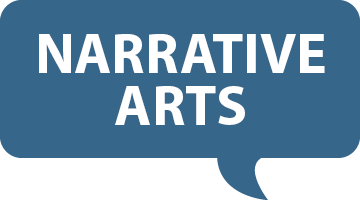What practices support storytelling on an ongoing basis?

Credit: Narrative Arts
Good stories have a certain magic to them, don’t they? But, as with any magic, there’s plenty going on that you don’t see. All the work it took to create a story and get it to you. Following are the four main practices that support social-change storytelling.
- Research: Research on narrative strategies and activities. Examples: The Opportunity Agenda’s research on effective framing and messaging. Animating Democracy’s Arts & Social Change Mapping Initiative.
- Training and convening: Online and offline work that helps groups share ideas and tell effective stories. Examples: The Leading Change Network’s Public Narrative trainings and tools. Creative Change retreat on culture-change strategies.
- Storytelling: Creation and presentation of films, books, plays, and other stories, or the facilitation of popular storytelling. Examples: Films and engagement campaigns in the Stories of Change partnership between the Sundance Institute Documentary Film Program and the Skoll Foundation. Orton Family Foundation’s Heart & Soul community-planning method.
- Infrastructure: Systems, platforms, and policies that support safe and effective storytelling and the distribution of stories. Examples: Nation Inside’s story-sharing platform on mass incarceration. WITNESS phone apps to support and protect video-for-change activists.
These practices all serve the short-term goals of a particular campaign while also building stronger social-justice movements for years to come. Organizations can do an audit of their own storytelling capacity in these four areas, then match the results against their needs.
Previous
